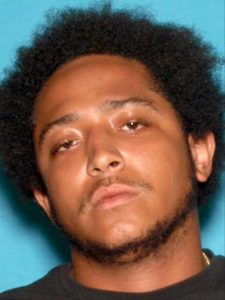by Melanie Camp
The Los Angeles City Council approved an allocation of more than $27 million for Vision Zero projects on Thursday, May 18th. The decision means a lot more money will go towards ending all traffic fatalities, including those involving bicycle riders and pedestrians, in LA in the next decade.
In a unanimous vote, the Council supported a motion authored by Councilmembers Mike Bonin and Paul Krekorian to allocate money the City of Los Angeles will receive from various sources, including the recently approved Measure M sales tax increase, as well as a gas tax increase passed by the State Legislature, to Vision Zero.
“Budgets are statements about our priorities, and I know of no higher priority than saving lives on our streets,” said Bonin.
The Bonin/Krekorian motion brings the city’s investment in Vision Zero for the coming fiscal year to a total of $27,242,062 – much more than the $3,000,000 allocated in the current year’s budget.
$1,500,000 of Vision Zero funding will go towards Great Streets LA, an initiative that aims to improve dangerous stretches of Los Angeles streets, where traffic fatalities are high, and road layout could better serve the community.
A portion of Venice Boulevard between Beethoven Street and Inglewood Boulevard in Mar Vista is currently being re-invented as a Great Street. The new street layout has a curbside section dedicated to bicycles. Next to this, is a narrow lane from which people can safely load and unload their car. Street parking now takes up one of what was previously three lanes of traffic.
However, a group of neighbors says the Great Street stretch of Venice Boulevard could be not so great for the community. Residents Against Cut-Thru Traffic are concerned reducing Venice Boulevard to two lanes along the Great Street stretch will increase local traffic making neighborhood back streets more dangerous.

Mar Vista local, Bob Pope, said cutting a section of Venice Boulevard from three lanes to two “may cause westbound regional commuter traffic to divert from Venice Boulevard to the residential streets of Palms Boulevard, via Inglewood Boulevard and possibly Grand View, to continue westbound.”
The Great Street stretch of Venice Boulevard was selected Street because it had a statistically proven higher number of traffic related deaths.
LA streets cover over 18% of our land mass and every year, more than 200 people die while trying to move throughout Los Angeles. Nearly half the people killed on LA streets are either walking or bicycling, and a large number of them are children and older adults. In fact, traffic collisions are a leading cause of death for children in Los Angeles, and during this year’s budget hearings, Los Angeles Police Department Chief Charlie Beck revealed that more people have died in LA so far in 2017 after traffic collisions than have been killed by gun violence.
“Reducing pedestrian and traffic fatalities is something we urgently need to work toward,” said Krekorian, who serves as the Chair of the Council’s Budget and Finance Committee.
Through Vision Zero, Los Angeles makes a commitment to eliminate all traffic deaths by 2025. As directed by Mayor Garcetti, the citywide effort brings together transportation engineers, police officers, advocates, and policymakers to work towards creating safer streets, with a focus on protecting the most vulnerable road users, including children, older adults, and people walking and bicycling.

Since launching Vision Zero in 2015, the Los Angeles Department of Transportation has identified a network of streets, the High Injury Network (HIN), where strategic investments will have the biggest impact in reducing deaths and severe injuries. Despite making up only six percent of our city streets, nearly two-thirds of all deaths and serious injuries involving people walking occur on the HIN. The budget allocation approved by the City Council today will provide enough funding for “Phase 1” improvements to be made on priority corridors on the high injury network, allowing for lane striping, roadway painting, the installation of bollards and traffic signs, as well as signal timing.

























